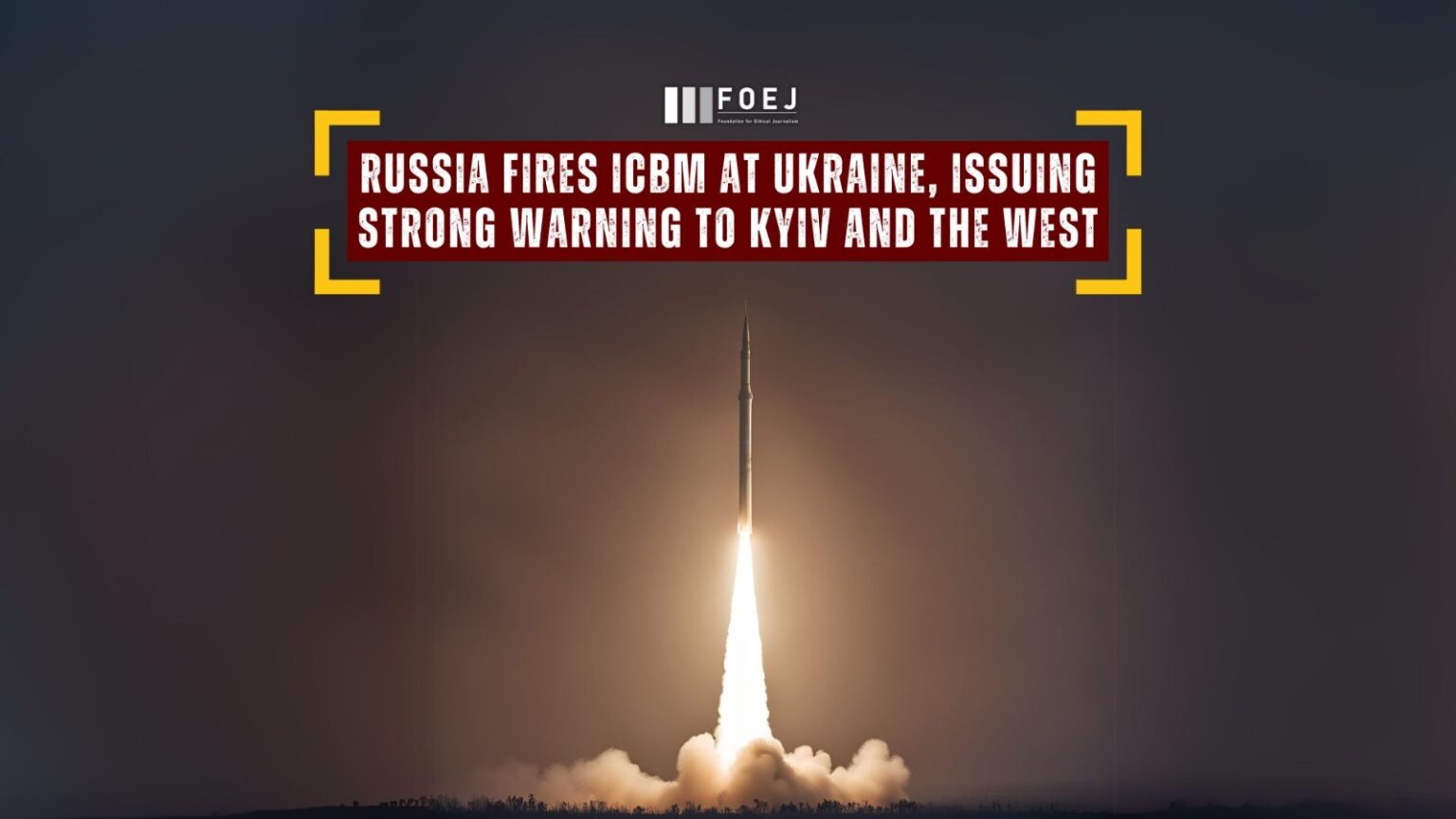Russia launched an Intercontinental Ballistic Missile (ICBM) in Ukraine just one day after President Vladimir Putin revised Moscow’s nuclear policy. The missile, armed with a conventional warhead, serves as a stark warning to both Ukraine and its Western supporters, signaling that Russia’s red lines must be acknowledged.
Intercontinental Ballistic Missiles (ICBMs), traditionally designed to carry nuclear warheads, can also be equipped with conventional warheads. The development, technology, and design of ICBMs were initially driven by the need for a nation’s nuclear deterrence strategy, enabling a swift response in the event of a nuclear conflict.
Moscow’s forceful response follows closely on the heels of approvals from U.S. President Joe Biden and U.K. Prime Minister Keir Starmer, permitting Ukraine to use Western-made long-range cruise and ballistic missiles to strike deep inside Russian territory. Within hours of receiving the green light from Washington and London, Kyiv launched a U.S.-supplied ATACMS missile and a U.K.-produced Storm Shadow missile at Russian targets.
Kyiv confirmed that this is the first time Moscow has launched an ICBM, as both sides experienced significant escalations in the war, which marked its 1,000th day on Wednesday.
The Ukrainian Air Force issued a statement today, confirming that Russian forces had launched multiple types of missiles at the central Ukrainian city of Dnipro this morning, with the apparent goal of crippling the region’s infrastructure.
The statement further noted that “an intercontinental ballistic missile was launched from the Astrakhan region of the Russian Federation.” According to an AFP report, a source in the Ukrainian Air Force confirmed that this marks the first time since the war began that Russia has fired an ICBM.
When asked about the ICBM launch, Moscow avoided giving a direct answer. Kremlin spokesperson Dmitry Peskov stated that he had “nothing to say on this topic.”









